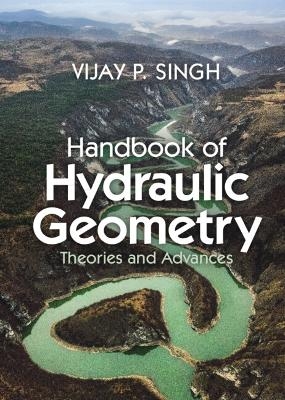
Handbook of Hydraulic Geometry
Cambridge University Press (Verlag)
978-1-009-22217-4 (ISBN)
Hydraulic geometry describes the relations between stable channel characteristics and discharge and adjustments made by a stream in response to changes in river discharge and sediment load. This book introduces hydraulic geometry and discusses different theories and their applications in river engineering, thus providing a comprehensive summary for hydraulic engineers, as well as graduate students and researchers in fluvial geomorphology and hydraulic and environmental engineering. Topics covered include the basis of power form of hydraulic geometry relations, validity and stability of power relations, state and assumption of equilibrium, variability of exponents, variation of channel width and velocity, and the effect of stream size and river channel patterns.
Vijay Singh is a University Distinguished Professor, a Regents Professor, and Caroline and William N. Lehrer Distinguished Chair in Water Engineering at Texas A&M University. He has 47 years of experience in research and teaching in hydrology, groundwater, hydraulics, and water resources. He is a Distinguished member of ASCE, an Honorary member of IWRA, a Distinguished Fellow of AGGS, and an Honorary Member of AWRA. He has received more than 100 national and international awards, including three honorary doctorates.
1. Introduction; 2. Governing Equations; 3. Regime Theory; 4. Leopold and Maddock (LM) Theory; 5. Theory of Minimum Variance; 6. Dimensional Principles; 7. Hydrodynamic Theory; 8. Scaling Theory; 9. Tractive Force Theory; 10. Thermodynamic Theory; 11. Similarity Principle; 12. Channel Mobility Theory; 13. Maximum Discharge and Froude Number Hypothesis; 14. Principle of Minimum Froude Number; 15. Hypothesis of Maximum Friction Factor; 16. Maximum Flow Efficiency Hypothesis; 17. Principle of Least Action; 18. Theory of Minimum Energy Dissipation Rate; 19. Entropy Theory; 20. Minimum Energy Dissipation and Maximum Entropy Theory; 21. Stream Power; 22. Regional Hydraulic Geometry; References; Index.
| Erscheinungsdatum | 28.11.2022 |
|---|---|
| Zusatzinfo | Worked examples or Exercises |
| Verlagsort | Cambridge |
| Sprache | englisch |
| Maße | 174 x 250 mm |
| Gewicht | 1170 g |
| Themenwelt | Technik ► Bauwesen |
| ISBN-10 | 1-009-22217-1 / 1009222171 |
| ISBN-13 | 978-1-009-22217-4 / 9781009222174 |
| Zustand | Neuware |
| Haben Sie eine Frage zum Produkt? |
aus dem Bereich


